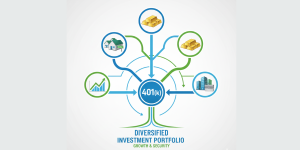Table of Contents
Planning for retirement is one of the most significant financial undertakings you’ll face in your lifetime. Yet, many Americans find themselves unprepared for the common retirement planning challenges that can derail even the most carefully constructed financial strategies. Understanding these obstacles and developing proactive solutions is essential for securing your financial future and achieving the retirement lifestyle you envision.
While no one can predict the future with certainty, identifying the most prevalent retirement planning challenges allows you and your financial advisor to create robust strategies that account for potential obstacles. This comprehensive guide explores seven critical challenges that can impact your retirement security and provides actionable insights to help you navigate them successfully.
Understanding Retirement Planning Challenges
Every retirement planning challenge requires a unique approach based on your individual circumstances, timeline, and financial goals. The key to successful retirement planning lies not in avoiding these challenges entirely, which is often impossible, but in recognizing them early and implementing strategic solutions that minimize their impact on your long-term financial security.
1. Inflation: The Silent Wealth Eroder
Perhaps the most insidious retirement planning challenge is inflation—the gradual increase in prices that steadily erodes your purchasing power over time. This challenge becomes particularly acute during retirement when you’re living on a fixed income while costs continue to rise.
The Real Impact of Inflation
Consider this: at a modest 3% annual inflation rate, the purchasing power of $100,000 will decline to approximately $74,000 in just ten years. Over a 30-year retirement, that same $100,000 would only buy what $41,000 purchases today. Food, utilities, healthcare, transportation, and housing costs all tend to increase faster than general inflation, meaning your everyday expenses will consume an increasingly larger portion of your retirement savings.
Even if you live frugally and maintain spending discipline, inflation affects everyone equally. This retirement planning challenge requires proactive strategies that go beyond simple savings accumulation.
Strategies to Combat Inflation
To address this retirement planning challenge, consider diversifying your portfolio to include growth-oriented investments that historically appreciate with inflation as well fixed income including inflation-protected bonds. Treasury Inflation-Protected Securities (TIPS), dividend-growth stocks, and real estate investments can help your portfolio maintain its purchasing power throughout retirement.
Work with your financial planner to model various inflation scenarios and ensure your retirement income strategy includes inflation adjustments. Many pension plans and Social Security provide cost-of-living adjustments, but these may not fully keep pace with your actual expense increases.
2. Healthcare Costs: The Growing Expense
Healthcare expenses represent one of the most significant and unpredictable retirement planning challenges facing today’s retirees. Medical costs have consistently outpaced general inflation, and this trend shows no signs of reversing.
The Scope of Healthcare Expenses
The average retired couple may need hundreds of thousands of dollars to cover healthcare expenses throughout retirement. This figure includes Medicare premiums, supplemental insurance, prescription medications, dental care, vision care, and long-term care services—many of which Medicare doesn’t fully cover.
Long-term care presents a particularly daunting retirement planning challenge. Whether provided at home, in an assisted living facility, or in a nursing home, long-term care services can quickly deplete retirement savings. The average annual cost for a private room in a nursing home can exceed $100,000 in many markets.
Planning for Healthcare Expenses
Addressing this retirement planning challenge requires multiple strategies. Health Savings Accounts (HSAs) offer triple tax advantages and can serve as powerful retirement healthcare savings vehicles. Long-term care insurance, while expensive, can protect your assets from catastrophic care costs. It’s also worth exploring hybrid life insurance policies with long-term care riders as alternative solutions.
Understanding Medicare coverage options, enrollment periods, and coordination with supplemental insurance is crucial. Missing enrollment deadlines can result in lifetime penalties, compounding this already significant retirement planning challenge.
3. Longevity Risk: Outliving Your Money
Living longer is wonderful, but it creates a unique retirement planning challenge: ensuring your money lasts as long as you do. With life expectancies increasing and many retirees living 30+ years in retirement, longevity risk has become increasingly prominent.
The Longevity Dilemma
Traditional retirement planning often used a 30-year timeframe, but many retirees now need their savings to last 35 or even 40 years. This extended timeline amplifies every other retirement planning challenge, from inflation to healthcare costs to investment risk.
The fear of outliving your savings can lead to overly conservative spending in early retirement, potentially sacrificing quality of life unnecessarily. Conversely, underestimating longevity and spending too aggressively can create financial hardship in your later years when you’re least able to adapt.
Addressing Longevity Risk
To manage this retirement planning challenge, consider income sources that last a lifetime, such as Social Security (delayed claiming increases benefits), traditional pensions, and annuities. A portion of guaranteed lifetime income can provide peace of mind and allow you to invest remaining assets more aggressively for growth.
Dynamic withdrawal strategies that adjust spending based on portfolio performance and life expectancy can help balance current lifestyle needs with long-term sustainability. Regular reviews with your financial advisor ensure your plan adapts as circumstances change.
4. Market Volatility and Sequence of Returns Risk
Investment returns don’t follow a straight line, and the timing of market downturns creates a significant retirement planning challenge known as sequence of returns risk. This phenomenon occurs when you experience poor investment returns early in retirement, potentially causing permanent damage to your financial plan.
Why Timing Matters
When you’re withdrawing money from your portfolio during market downturns, you’re forced to sell more shares to generate the same income. This reduces the number of shares available to participate in the eventual recovery, potentially leaving your portfolio permanently impaired compared to someone who experienced the same returns in a different sequence.
This retirement planning challenge is particularly acute in the five years before and after retirement—a period often called the “fragile decade.” Market losses during this critical window can significantly impact your retirement security.
Mitigating Sequence Risk
Several strategies can help manage this retirement planning challenge. Maintain a cash reserve covering 1-2 years of expenses, allowing you to avoid selling investments during market downturns. Consider a “bucket strategy” that segments assets by time horizon, with near-term needs funded by stable investments and longer-term assets invested for growth.
Flexible withdrawal strategies that reduce spending during down markets can significantly improve portfolio longevity. Some retirees also maintain the option to generate income through part-time work or consulting during early retirement, providing flexibility to reduce portfolio withdrawals when markets are unfavorable.
5. Family Financial Obligations
Modern family dynamics create complex retirement planning challenges that previous generations rarely faced. Many retirees find themselves financially supporting adult children, aging parents, or both—a situation sometimes called the “sandwich generation” dilemma.
Supporting Adult Children
Rising education costs, expensive housing markets, and economic instability have made financial independence more difficult for younger generations. Many retirees face requests to help with student loan debt, home down payments, business ventures, or temporary support during unemployment or divorce.
While helping family is admirable, this retirement planning challenge can seriously jeopardize your financial security. Unlike your children, you can’t take out loans for retirement. Your children have their entire working lives to recover financially, while your timeline is limited.
Caring for Aging Parents
Many retirees must also support aging parents who lack adequate retirement resources. This can include direct financial assistance, covering healthcare costs, providing housing, or leaving the workforce early to provide caregiving—all creating significant retirement planning challenges.
Setting Healthy Boundaries
Addressing this retirement planning challenge requires honest family conversations and clear boundaries. Be transparent with your financial planner about potential family obligations so they can be incorporated into your planning. Consider structured assistance (loans rather than gifts, matching contributions for savings goals) that helps family members while protecting your retirement security.
Remember that maintaining your financial independence benefits everyone in the long run. Depleting your retirement savings to help family members may ultimately shift the financial burden back to them when you need care.
6. Inherited Debts and Estate Complications
Not all inheritances are windfalls. An increasingly common retirement planning challenge involves inheriting financial obligations rather than assets, particularly as aging parents face mounting healthcare costs and insufficient retirement resources.
Understanding Inherited Financial Burdens
While you generally aren’t legally responsible for your parents’ debts, practical reality often differs. Final expenses, unpaid medical bills, property maintenance, and estate settlement costs can consume expected inheritances and even require additional financial contributions from heirs.
Some adult children also assume their parents’ mortgage payments to prevent foreclosure, cover reverse mortgage balances to retain family homes, or settle debts to protect the family’s reputation and relationships.
Planning for Estate Realities
This retirement planning challenge requires proactive communication with aging parents about their financial situation, estate plans, and end-of-life wishes. While these conversations can be uncomfortable, understanding potential obligations allows you to plan accordingly.
Ensure your parents have proper estate planning documents, including wills, powers of attorney, and healthcare directives. Consider whether long-term care insurance or other protection strategies might prevent financial crisis if extensive care is needed.
Disclose potential inherited obligations to your financial planner so your retirement plan can account for these possibilities. Building contingency reserves may be necessary if significant parental support is likely.
7. Lifestyle, Spending, and Behavioral Challenges
Perhaps the most controllable yet most difficult retirement planning challenge involves your own spending behavior and lifestyle choices. Decades of earning and spending habits don’t automatically change when you retire, even though your financial circumstances do.
The Lifestyle Adjustment
Many retirees struggle to adjust spending from their peak earning years to retirement income levels. The “retirement lifestyle” portrayed in advertising—frequent travel, expensive hobbies, generous gifting—may not align with your financial reality. This disconnection between expectations and resources creates a significant retirement planning challenge.
Behavioral finance research shows that spending habits are deeply ingrained and emotionally driven. Impulse purchases, lifestyle creep, keeping up with peers, and emotional spending can all undermine even well-designed retirement plans.
Creating Your Comprehensive Retirement Strategy
Each retirement planning challenge discussed here rarely occurs in isolation. More commonly, retirees face multiple challenges simultaneously—inflation eroding purchasing power while healthcare costs rise, family obligations emerge during market downturns, or lifestyle adjustments become necessary after unexpected expenses.
The complexity and interconnection of these challenges underscore why professional financial planning is so valuable. An experienced advisor helps you anticipate obstacles, develop contingency plans, and create flexible strategies that adapt as circumstances change.
The Value of Professional Guidance
Working with a qualified financial planner provides numerous advantages in addressing retirement planning challenges. Professional advisors bring expertise in tax-efficient withdrawal strategies, investment management, Social Security optimization, healthcare planning, estate planning, and behavioral coaching.
Perhaps most importantly, advisors provide accountability and objective perspective. They help you stay disciplined during market volatility, make logical rather than emotional decisions, and maintain focus on long-term goals despite short-term challenges.
Fee-only fiduciary advisors eliminate conflicts of interest, ensuring recommendations prioritize your best interests rather than generating commissions or sales. This alignment is crucial when addressing significant retirement planning challenges that require unbiased guidance.
Navigating Your Retirement Journey
Retirement planning challenges are inevitable, but they’re not insurmountable. With proper preparation, professional guidance, and realistic expectations, you can build a retirement strategy that weathers various obstacles and delivers the financial security you deserve.
The key is starting early, planning comprehensively, and reviewing regularly. Address challenges proactively rather than reactively. Make informed decisions based on your unique situation rather than generic advice or peer pressure. And most importantly, work with qualified professionals who can guide you through the complexity of modern retirement planning.
Your retirement should be a time of fulfillment, not financial anxiety. By acknowledging and addressing these common retirement planning challenges, you’re taking crucial steps toward a secure and enjoyable retirement that aligns with your goals and values.
If you’re ready to tackle your retirement planning challenges with a professional, Calamita Wealth Management specializes in personalized, fee-only financial planning for individuals and families in Charlotte, NC and beyond. Our comprehensive approach addresses the full spectrum of retirement planning challenges, helping you build confidence in your financial future.
Contact us today to schedule your consultation and start building a retirement strategy designed for your success.







